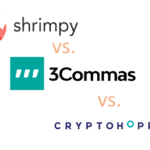Key takeaways:
- The ESMA has released a new Opinion outlining the severe risks associated with international crypto companies that apply for partial authorization under the MiCA regulation.
- According to the EU markets watchdog, this method could threaten consumer protection and produce an unfair playing field that would be detrimental to execution sites in the EU.
The regulatory body in charge of monitoring the financial markets in the European Union, the European Securities and Markets Authority (ESMA), has released a new Opinion outlining the severe risks associated with international crypto companies that apply for partial authorization under the Markets in Crypto Assets (MiCA) regulation while carrying out sizable operations offshore.
As it has done previously in the wake of new industry-wide legislation (i.e., in the aftermath of Brexit), the ESMA submitted its opinion statement on July 31 about MiCA.
The most recent warning from ESMA is on the complex organizational setups of numerous international crypto companies, which are known to route orders to execution venues outside the EU, frequently in offshore countries, using brokers the EU has authorized.
According to the EU markets watchdog, this method could threaten consumer protection and produce an unfair playing field that would be detrimental to execution sites in the EU.
In response, ESMA has issued an Opinion urging National Competent Authorities (NCAs) in each of the EU member states to thoroughly examine the business models of large multinational corporations during the authorization process.
According to ESMA, the execution venues for cryptoassets are essential to the ecosystem’s overall operation. The Opinion suggests that this would appear like this:
“While most crypto-asset conglomerates are expected to operate a multilateral trading platform outside the EU, there could also be cases where the non-EU entity is rather internalizing the order flow, executing orders coming from EU clients on their own account.”
In order to protect customers and uphold the integrity of the crypto sector, its objective is to guarantee that these companies adhere to all of MiCA’s regulations.
It also emphasizes how crucial it is for businesses requesting MiCA authorization to conduct a thorough, case-by-case review.
The ESMA has delineated several prerequisites that these companies need to fulfill, such as guaranteeing optimal execution methodologies, proficiently handling conflicts of interest, and honoring their obligation to behave in the best interests of their clients.
In addition, companies handling crypto-assets on behalf of their clients must follow strict requirements regarding custody and management.
On July 3, in conjunction with the release of its Opinion, ESMA released a Final Report under the MiCA framework that included eight draft technical standards intended to improve clarity and transparency for retail investors and crypto-asset service providers (CASPs).
These guidelines address a number of topics, such as trade transparency, order book forms, record-keeping procedures, sustainability indicators, business continuity plans for CASPs, and the readability of white papers.
EU regulators have been unwavering in their enforcement of the main aspects of the MiCA law since it went into effect in June 2023. They have also been striving to elucidate any potential compliance issues that firms may face.
In an attempt to guarantee consistency throughout the industry, EU regulators unveiled a tool on July 19 to help standardize crypto-asset classification under MiCA through a new test and guidelines.
Important market participants have also been responding: crypto exchanges like OKX are choosing EU locations to serve as MiCA hubs, allowing them to manipulate regulatory infrastructure for expanded EU crypto services, and the central bank of Italy declared that it will share how it envisions the application of MiCA in the nation.









